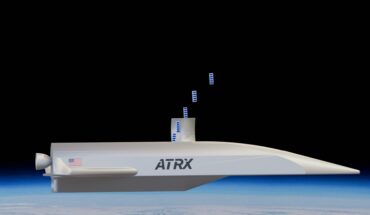For rejecting or reusing bitcoin miner heat exhaust, a basic understanding of thermodynamics can effectively help manage mining operations and energy conversion. ‘Thermodynamics’ originates from the Greek terms thermos (heat) and dynamis (power). It refers to the study of energy transformations involving heat (thermal and heat are often interchangeable words in this field).
Energy & Work
Energy is a property of matter that is not directly observable or tangible. It manifests in many different forms: kinetic, potential, chemical, electrical, nuclear, and thermal. Energy can be defined as “the capacity to do work”. In physics, work (W) is defined as “the ability to exert a force over a distance”. The amount of work done is calculated by multiplying a force (F)over the distance (d) it was applied.
W = F * d
Let’s first start with mechanical work energy. Imagine lifting a bitcoin miner to install onto some empty rack space. If you apply a force of 100 newtons (N) to lift the machine over a distance of 1 meter (m), the amount of work done is 100 newton-meter (Nm). Since energy is the capacity to do work, the terms are interchangeable. Therefore, 100 Nm of energy is required to lift the object. The unit of work or energy in the International Standard of Units (SI) is the joule (J), and 1 Nm is equal to 1 J. Thus, lifting the bitcoin miner requires 100 J of energy.
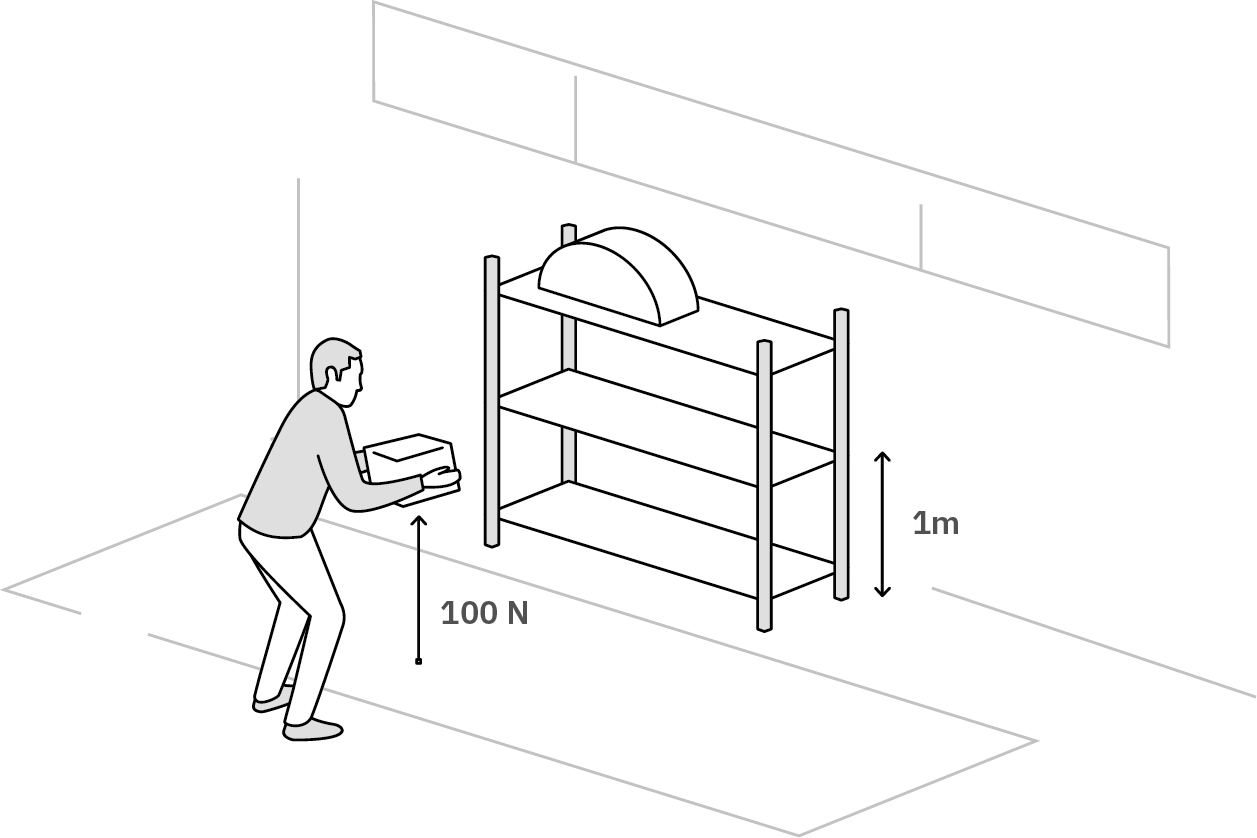
Electrical work involves moving an electric charge (q) through an electric field (E) over some distance (d). Electricity is invisible, so it can be hard to conceptualize. The best example I’ve found is the following: Think of the charge as a person going down a slide. The electric field is represented by the slope of the slide, where a larger electric field is analogous to a steeper slope. The distance that the charge travels is represented by the length of the slide. In this way, electrical work can be understood as the force exerted by the electric field on the charge multiplied by the distance the charge travels within the field.
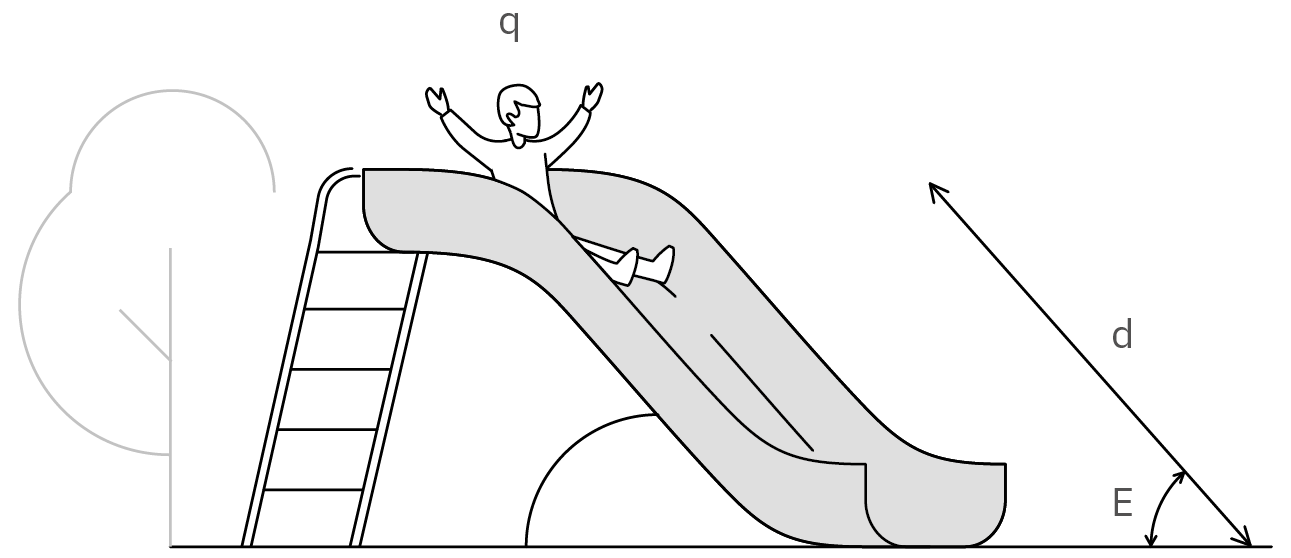
Bitcoin mining requires electrical work to perform the logic operations of the SHA-256 hash functions, hence the appropriately named proof-of-work description for the process!
As it relates to bitcoin miner heat exhaust, you may wonder how heat energy can do work. When heat is added to a system, such as a gas, it increases the gas’s pressure and volume, enabling it to do work. This occurs in combustion engines. The work done on the system can be determined by measuring the pressure force (P) exerted by the gas over the change in volume (V) – proportional to distance – of the piston chamber.

The exact amount of work that can be performed by bitcoin miner heat energy is related to the temperature difference between the hot exhaust and the cold surroundings.
Because all of these forms of energy can be defined as the ability to do work, they share a common base unit, the Joule (J).
Power
Power is a measure of energy usage over time, denoted joules per second (J/s), also known as the watt (W). Power quantifies how quickly energy is consumed or generated. For example, if a device uses 1 joule of energy every second, its power consumption is 1 watt.
For bitcoin miners, power determines the rate at which energy is used to perform hash functions. This is a critical metric for miners. Higher power consumption generally means more computations per second, leading to higher hash rate, and also more heat generation.
Example:
A bitcoin miner drawing 3000 watts of electric power consumes 3000 joules of energy every second! Over an hour, this consumption amounts to 10.8 million joules (since 1 hour = 3600 seconds).
Units
In addition to the international standard units for energy and power, various other units are commonly used in different regions and applications.
Units of Energy
- Joule (J): The standard SI (metric) unit of energy. It is defined as the amount of work done when a force of 1 Newton is applied over a 1 meter distance. 1 J = 1 N * 1 m
- British Thermal Unit (BTU): Commonly used in the United States for heating and cooling systems. 1 BTU is the energy required to raise the temperature of 1 pound of water by 1 degree Fahrenheit.
- Therm: Used primarily in natural gas billing. 1 therm = 100,000 BTU.
- Watt-hour (Wh): Typically used for electrical energy storage, especially electronics and small battery capacity measurements.
- Kilowatt-hour (kWh): 1 kWh = 1,000 Wh. Often used in electricity billing and large electric car battery sizing.
Units of Power
- Watt (W): The standard SI (metric) unit of power. Defined as 1 J per second (J/s).
- Kilowatt (kW): 1 kW = 1,000 W. Commonly used in electrical power applications.
- Megawatt (MW): 1 MW = 1,000,000 W. Commonly used in industrial power consumption and generation.
- Horsepower (hp): Used primarily in the automotive industry. 1 hp is approximately equal to 746 W.
- BTU per hour (BTU/h): Used in heating and cooling applications to measure the heating power of HVAC or hydronic systems.
Common Units in Bitcoin Mining
During the mining process, electric energy (J) is continuously converted into thermal heat energy (J). Since both electricity and heat are forms of energy, they share the same unit of measurement. On a rate basis, electrical power (W) is converted into thermal power, often referred to as a heat rate (W).
While joules and watts are base units for measuring energy and power, other standard units are more commonly used due to practical considerations such as scale of consumption, measurement, and different applications. For electrical purposes, they are:
- Electric Energy: Kilowatt-hour (kWh) The kilowatt-hour (kWh) is the most common unit of energy measurement and billing worldwide. It is the standard used by electric utility companies for billing residential and commercial energy consumption.
- Electric Power: Kilowatt (kW) The kilowatt (kW) is the most common unit of power measurement worldwide. It is the standard unit used by most large equipment and high power machinery.
The difference between watts and watt-hours can be confusing at first. Watts measure power, which is the rate at which energy is used or generated. On the other hand, watt-hours measure the total amount of energy consumed or generated in a time period. Since one watt represents one joule per second, multiplying it by hours gives you joules, a direct measure of energy. This concept is best understood with an example.
Example:
If a bitcoin miner uses 3000 watt-hours (3 kWh) of energy over the course of 1 hour, then its constant power consumption is 3000 watts, or 3 kW. If that same machine is run over the course of 2 hours, then it consumes a total of 6000 watt-hours of energy, or 6 kWh.
3000 Wh / 1 h = 3000 W
6000 Wh / 2 h = 3000 W
When it comes to measuring energy consumption and power draw in the context of heating systems, the common units for electrical applications are not typically used. Instead, the most widely used units are:
- Heat Energy: British Thermal Unit (BTU): A commonly used unit for measuring energy, especially in heating and cooling systems in North America. 1 kWh = 3,412 BTU.
- Heat Power: British Thermal Unit (BTU/h): A common unit for measuring the power output or capacity of heating and cooling systems, indicating how much energy is transferred per hour. 1 kW = 3,412 BTU/h.
For bitcoin mining heat reuse systems, it’s often necessary to convert between these common units of electrical and thermal energy and power. This is particularly important since most heating infrastructure is rated in BTU/h, while bitcoin mining hardware is rated in kW.
Temperature vs Thermal Energy
Temperature is not a direct measure of energy. It is a measure of the average kinetic energy of particles in a substance. Molecules of a substance vibrate at the atomic scale, and the average speed of their vibration defines temperature. The faster particles of a substance move, the higher its temperature.
In bitcoin mining hardware, electrical current flows through the machine’s circuitry. Collisions and resistance at the atomic scale cause the internal components of the ASIC chips to vibrate, increasing their temperature.
Thermal energy, on the other hand, represents the total kinetic energy of all the particles in a substance. This energy depends on three key factors: temperature, mass, and specific heat capacity.
- Temperature (T): The measure of the average kinetic energy of the particles in a substance. Higher temperatures mean more particle motion.
- Mass (m): The amount of substance. More mass means more particles, which contributes to greater total thermal energy.
- Specific Heat Capacity (c): This indicates how much heat energy is required to change the temperature of a unit mass of the substance by one degree Celsius. It can be thought of as how resistant a substance is to changing temperature.
Bitcoin mining hardware with more mass or substances with higher specific heat capacities require more energy to change temperature.
Laws of Thermodynamics
Now that we have a grasp of the concepts of energy, work, power, and temperature, it’s essential to understand the Laws of Thermodynamics, which define the fundamental principles governing energy transfer and transformation. These laws are useful for understanding the physical limits and maximum efficiency achievable for traditional bitcoin mining or heat reuse operations.
1st Law
The First Law of Thermodynamics, also known as the Law of Energy Conservation, states that energy cannot be created or destroyed, only transformed from one form to another.
Electric energy consumed by bitcoin miners is used for computational work and converted into heat throughout the process. During this conversion of electricity to heat, no energy is lost or destroyed. Nor is any generated or added to the system.
Electric circuits are highly efficient at converting electric energy into heat. A negligible amount of the electric energy is converted into other forms, such as light, sound, and large-scale kinetic motion. If your hash boards start glowing, making noise or moving around, you’ve got a big problem on your hands!
The result is a near-perfect conversion of electricity to heat.
Example:
A 3000 W bitcoin miner exhausts approximately 3000 W of heat.
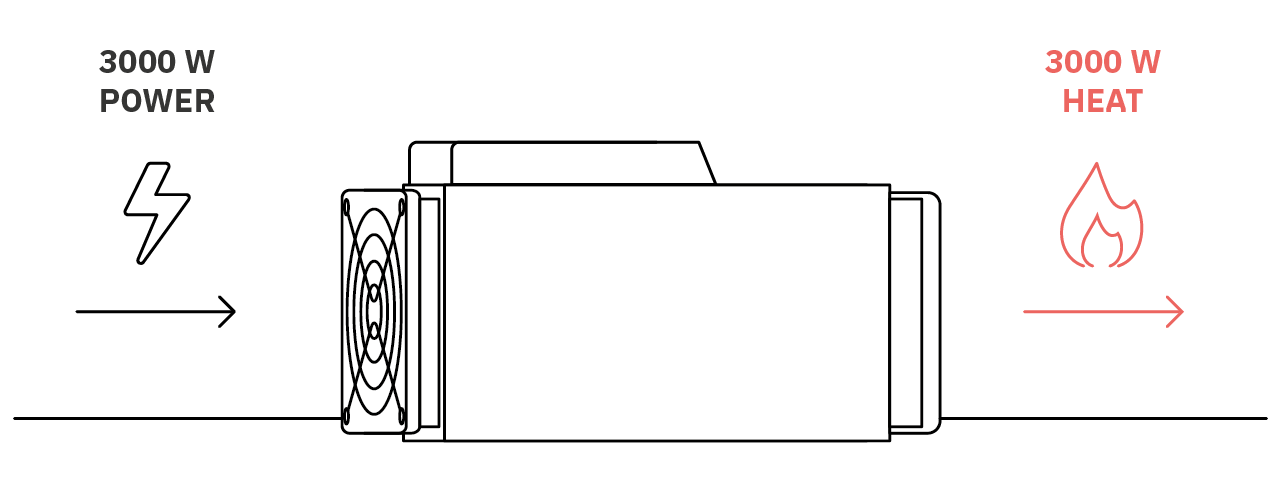
2nd Law
The Second Law of Thermodynamics states that for any energy transfer, the total entropy – a measure of disorder or randomness – of a system will always increase. This law defines a directional nature of all processes, indicating that energy transformations are inherently irreversible, and cannot be undone with perfect efficiency. It requires additional energy to undo things!
Consider mixing ethylene glycol into a water mixture to create a coolant with a lower freezing point. The process of separating the two substances, molecule by molecule, would require an impractical amount of energy and will not naturally undo itself. This illustrates an irreversible process where entropy is generated as the two substances mix.
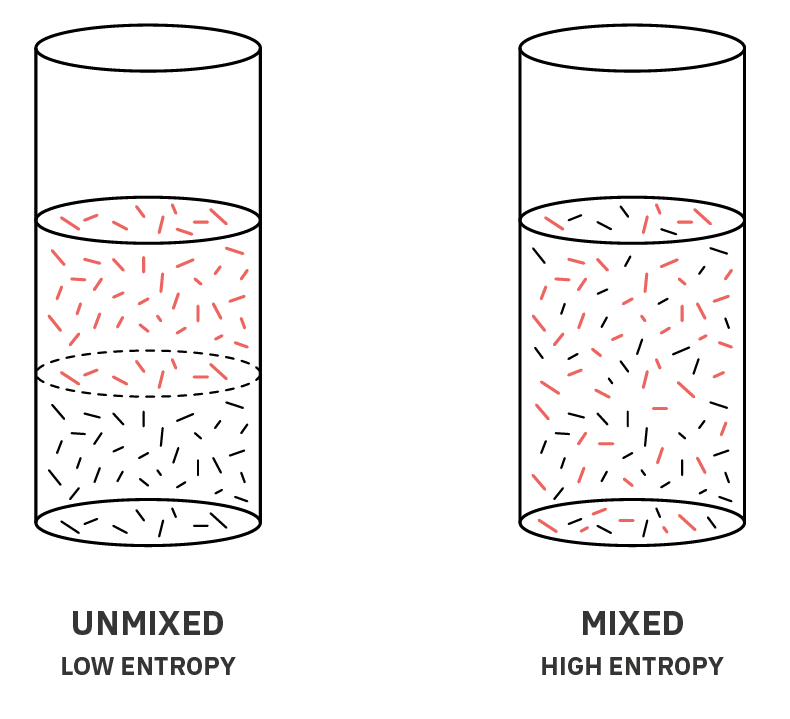
As it relates to mining bitcoin, entropy is generated when electricity is converted into heat throughout hash operations. This conversion is an irreversible process, where the energy transfers from an ordered state to a less ordered state. The sum of all heat energy cannot be perfectly captured and converted back into electricity.
3rd Law
The Third Law of Thermodynamics defines absolute zero as the temperature at which the kinetic motion of particles approaches zero. Recall that temperature measures the average particle velocity of a substance. No particle motion represents the lowest possible temperature. Absolute zero is defined as -459.67°F, -273.15°C, or 0°K on the Kelvin scale (hence its purpose). At absolute zero, the entropy of a substance approaches zero, where there is no disorder or randomness.
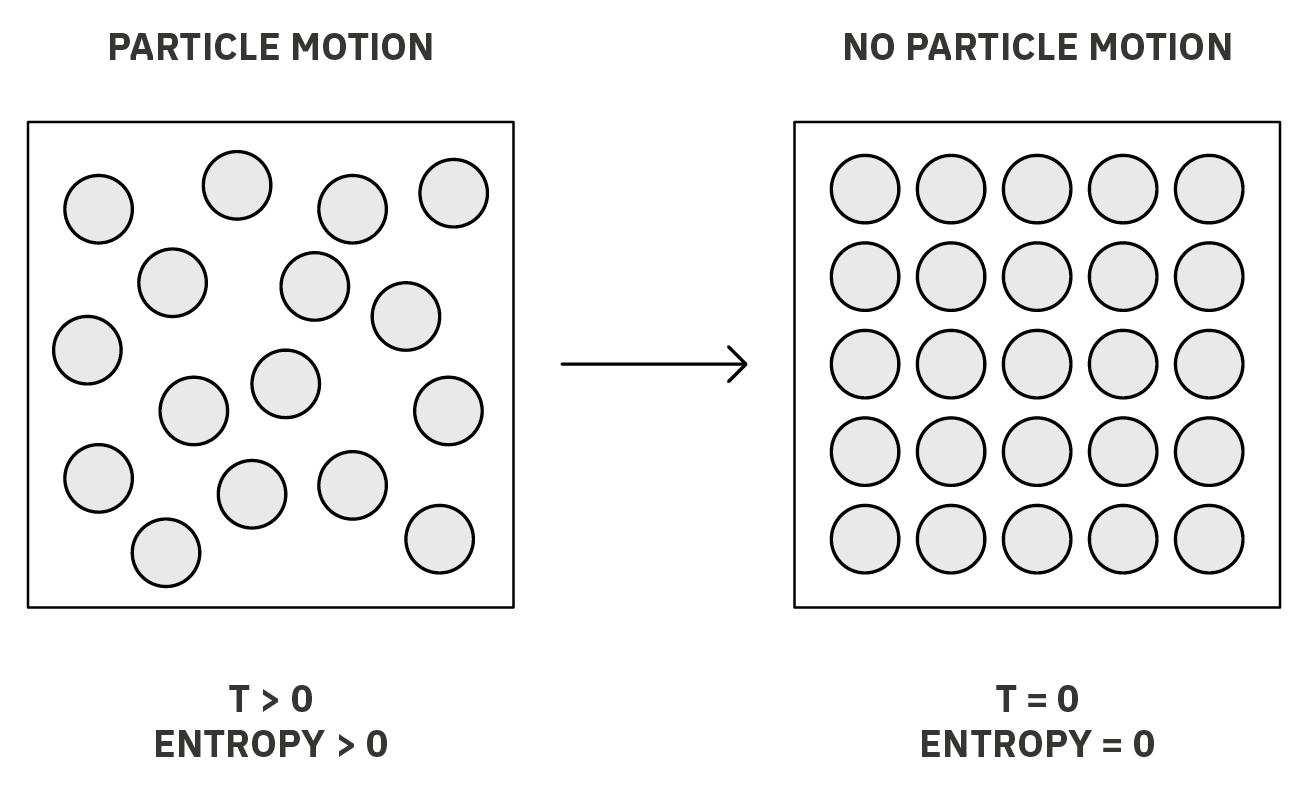
Now, let’s relate this to a bitcoin mining rig. Think of the miner as a machine that’s constantly working to mine bitcoin. When the rig is powered on, it’s using electricity and getting hot, like the particles in a substance that are moving around quickly when they’re warm. But imagine slowly turning down the power to the mining rig. As you lower the power, the machine works less and less, cools down, and eventually, stops working entirely. This is like reaching absolute zero for the miner – there’s no more hashrate, no heat generated, and everything is completely shut down. Just as absolute zero means no movement or heat in particles, a powered-off mining rig represents no work, no heat, and complete inactivity.
Quantity vs Quality
A more relatable way to think about the First and Second Laws of Thermodynamics is with the concept of energy quantity and quality. For a bitcoin mining operation, we can distinguish the two as follows.
Energy quantity refers to the total amount of energy in a system. From the first law, we know this must be conserved. It can neither be created nor destroyed. The amount of electric energy consumed by the bitcoin miners is equal to the heat energy they output (recall, electric circuits are nearly 100% efficient at converting electricity to heat). A one megawatt bitcoin mine must reject one-megawatt of heat. The quantity is conserved.
The quality of energy, however, is not conserved, and is governed by the Second Law of Thermodynamics. Energy quality is a measure of its usefulness for doing work. High-quality energy is organized (low entropy) and can be easily converted to perform work. Electricity is high-quality. It’s very versatile – used to mine bitcoin, drive motors, power lights, and everything in between. On the other hand, thermal heat energy is much lower in quality than electric energy. Low-quality energy is disorganized (high entropy) and difficult to convert into useful work.
This is where the concept of exergy becomes essential. Exergy quantifies the portion of energy that can be converted into useful work, considering both its quality and the surrounding environment. While the total heat energy output (energy quantity) from a bitcoin miner is fixed and equal to its electrical energy input, the exergy of that heat depends on its temperature relative to its surroundings. Higher exhaust temperatures correspond to higher exergy, meaning the waste heat has greater potential for useful applications such as heating, boiling water, or even driving a heat engine.
Through the conversion of electricity to heat energy inside a bitcoin miner, entropy increases and exergy decreases as energy quality is diminished. Some of the capability for doing useful work is destroyed. But how much exactly?
The capacity for thermal energy to perform work is directly related to the temperature difference between a heat source and its surroundings. This is because thermal heat energy can only be transferred when there is a temperature difference between two substances. The mixing of a high-temperature substance with a lower-temperature substance increases entropy as it leads to a more disordered state and a more even distribution of the energy. The directional nature of the second law dictates that heat energy will only transfer from hot to cold when there is a temperature difference.
For bitcoin mining, the temperature difference between the exhaust fluid (air, immersion oil, water) and the ambient environment dictates work capacity. A larger temperature delta increases the potential of converting thermal energy into mechanical work or other useful forms. Thus, higher temperatures have higher quality energy and are more capable of performing useful work (higher exergy).
A system that converts heat energy back into useful work is called a heat engine. The theoretical maximum efficiency of a heat engine is defined by the Carnot efficiency:
max = 1 – (Tcold, ambient temp / Thot, fluid temp)
Here you can see the dependency of energy conversion efficiency on the temperature difference.
Low Grade Heat
The output fluid temperatures from bitcoin miners typically range from 40-70°C. This range is commonly referred to as low-grade heat, since the thermal energy is relatively small compared to high-grade heat from sources like gas vapors, boilers, combustion and other industrial processes. Generally, temperatures below 150°C (302°F) are classified as low-grade. Bitcoin miner heat exhaust falls into the specific category of ultra low-grade heat, with temperatures below 100°C (212°F) – the boiling point of water.
High-quality heat energy is often used in processes such as heat engines or other thermodynamic cycles, where it is converted into useful work, such as motion or electricity. But we know these applications are limited by the temperature difference between the heat source and the surroundings. Unfortunately for bitcoin miners, low-grade heat is extremely inefficient at converting into work compared to energy transfer from higher quality (temperature) heat sources.
As a result, bitcoin miners are generally not suitable for industrial processes where heat energy is converted back into useful work. However, they can be effective for pre-heating if additional heat is supplied from an external source, like natural gas power generation, or can still make sense for work applications with low conversion efficiency if the energy is abundant and basically free, like from geothermal or other renewable sources.
Heat for Heating
So what can you do with the waste heat energy? Since it can’t be destroyed and must be managed, it might as well put it to use! Because bitcoin miner heat exhaust is low-quality, however, the best application of hashrate heat is to use this waste energy directly for system heating, rather than convert the heat back into work.
Remember, we lose efficiency with each step of energy conversion. Using heat energy directly for heating applications, such as warming spaces or preheating fluids, takes advantage of its existing form without the efficiency losses associated with converting it back into higher-quality energy forms like electricity. Bitcoin mining heat reuse is best suited for direct heating applications as a result.
Bitcoiner miners already reduce waste by converting cheap and excess energy into economic value. Now, in heat reuse applications, miners serve an additional purpose by providing heat. Mining bitcoin is the most thermodynamically sound method for heating. Not a single joule of energy is put to waste. Instead, each one serves a dual purpose.
Get Tyler’s Book
Bitcoin Mining Heat Reuse will be available to the public after its release on January 30, 2025 at the Nashville Mining and Energy Summit. Check back here soon!



